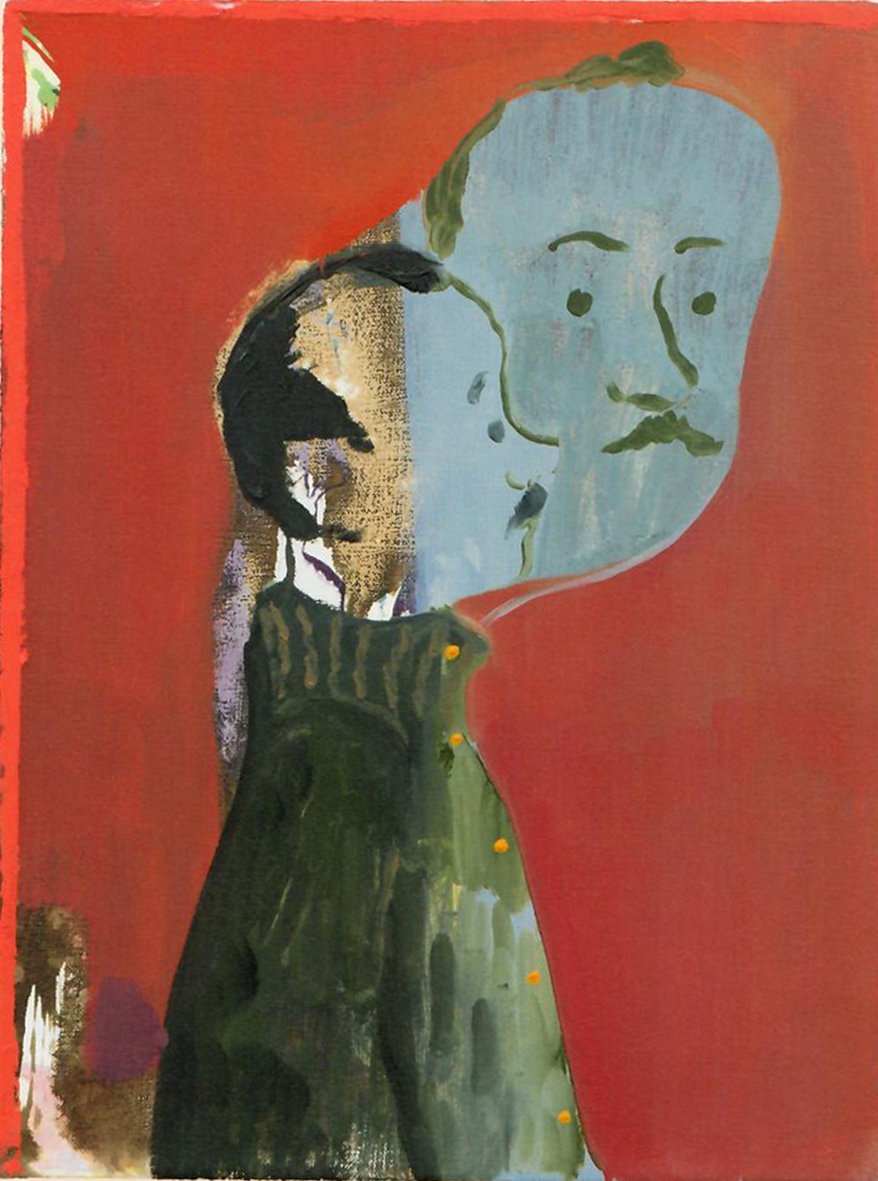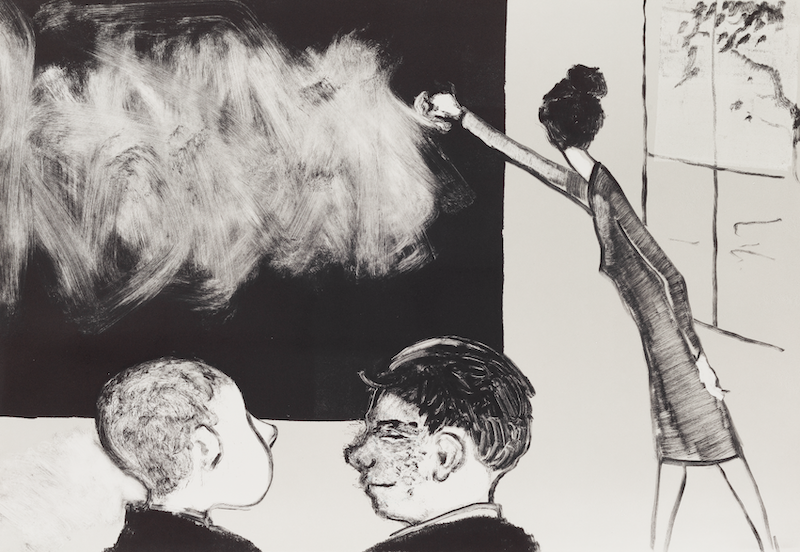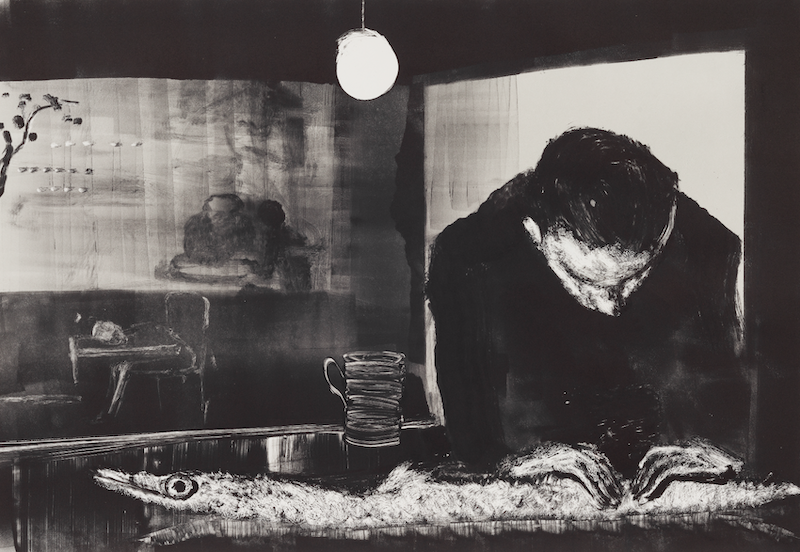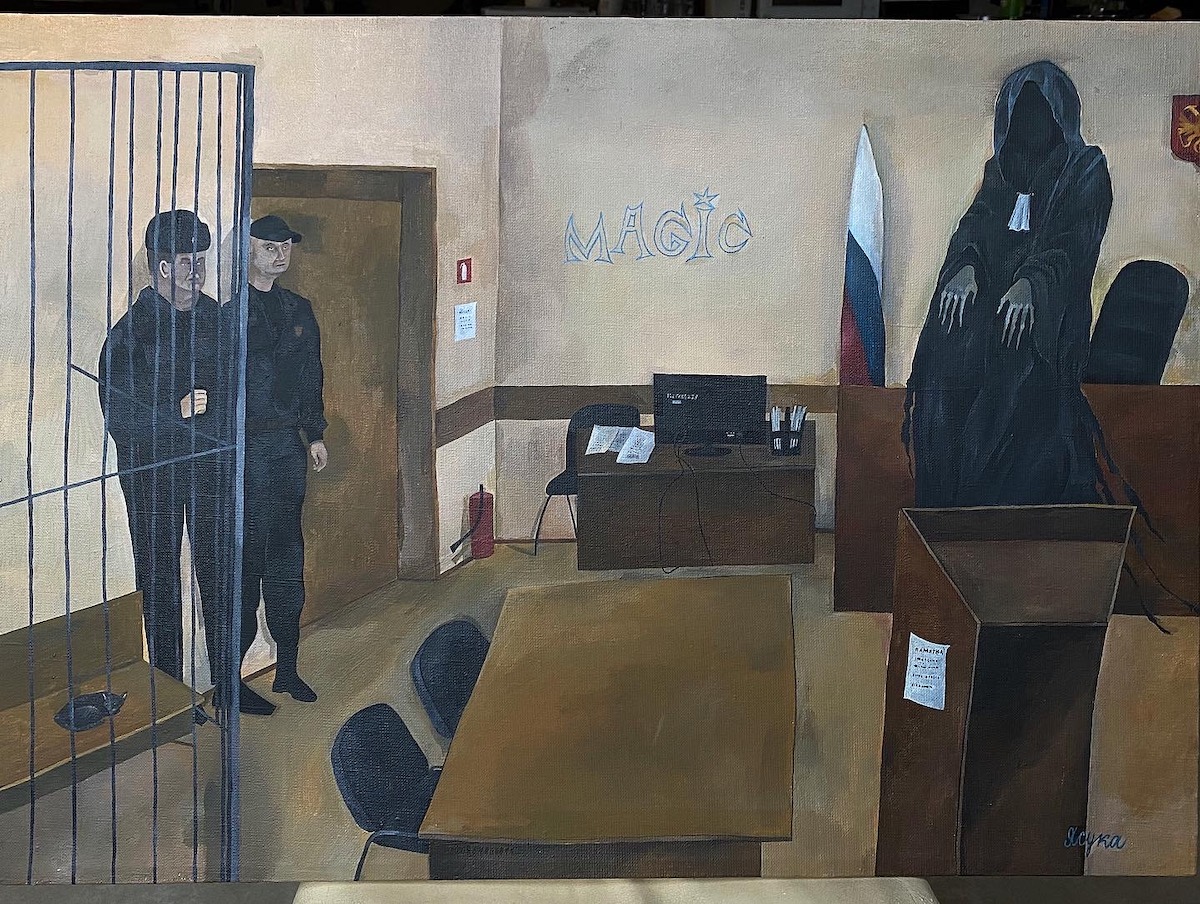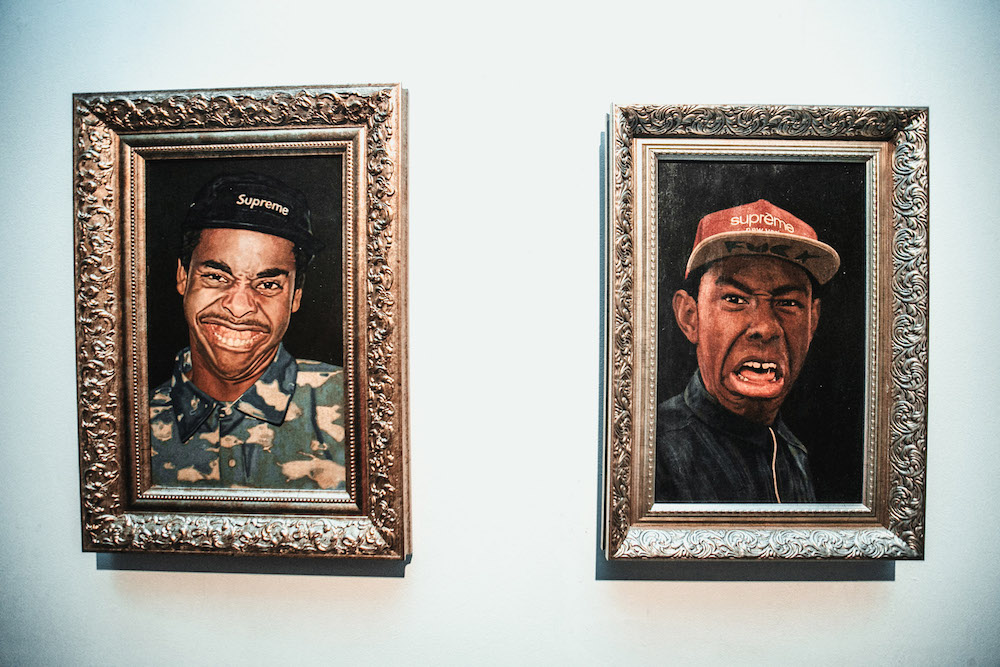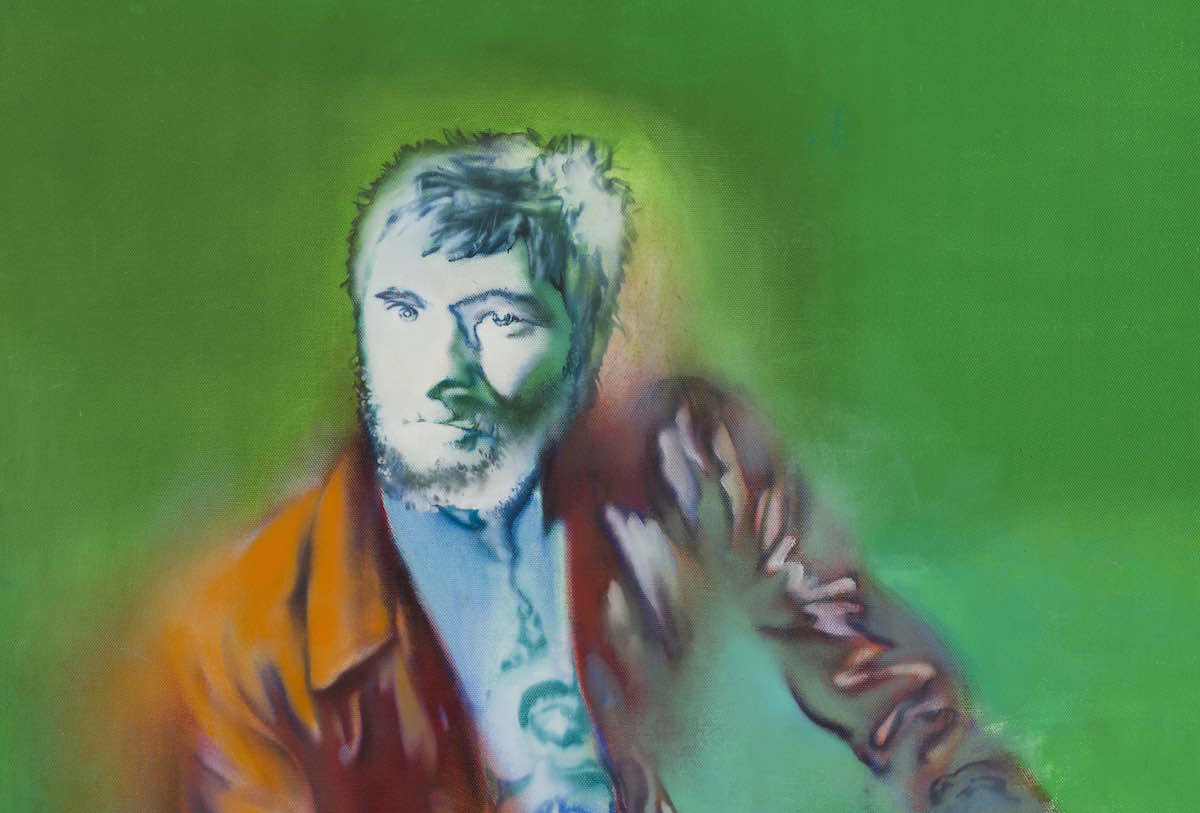Urbanites and existential angst: the not quite figurative world of painter Sanya Kantarovsky
Surreal, strongly coloured, and imaginatively titled, the figurative paintings of Russian-born, New York-based artist Sanya Kantarovsky appear as visual translations of the common urbanites depicted in Nikolai Gogol’s short stories.
Born in Moscow in 1982, Kantarovsky moved to the US as a child together with his family. His love for art began early. “No one in my family remembers me not drawing and painting,” he told The Calvert Journal. After graduating the Rhode Island School of Design in Providence, and receiving his MFA at the University of California, his career took off in 2010, with his debut at the Marc Foxx gallery in Los Angeles.
Drawing on surrealism and post-impressionism, as well as a wide range of influences including children’s cartoons, folk illustrations, and the Soviet satire magazine Krokodil, Kantarovsky depicts difficult power dynamics between lovers, noblemen and servants, or mothers and their clinging children. Elsewhere, he is drawn to angsty depictions of white collar workers. “I am drawn to simultaneity as a value,” the artist explains. “That can manifest in a variety of ways, but the cognitive dissonance involved in negotiating simultaneous truths is something I find productive and worthwhile. Perhaps the main simultaneity — the inherent truth in lived experience — is that of cruelty and love, violence and beauty.”
Despite being figurative, Kantarovsky’s paintings are not portraits. Rather, he draws “types” of people. “There’s not enough there to consider them characters — they’re bystanders, once-overs,” he says in his monograph, No Joke. It’s perhaps this quality that brings Kantarovsky’s work close to illustration, one of his early passions. Ultimately, the artist argues that he’s less interested in developing a new language in art, but instead, is invested in the continuity within painting as a practice and dialogue.
Kantarovsky’s latest projects, titled Two Suns, after a poem by Marina Tsvetaeva (“Two suns are cooling down … the one that burns the hottest is the first to die”), presented at the Second Garage Triennial of Contemporary Russian Art in Moscow earlier this year, leaves his emblematic strong colours behind in a bid to reflect on his grandmother’s 10,000 black and white photographs, which he inherited when she died a year ago. “It was a very moving process,” the artist says. As his grandmother usually only printed one or two photographs per roll of film, Kantarovksy has been revisiting old recollections. “All these memories that were only attached to one photo, were now animated by a string of photographs,” he says.
In the future, he would like to create a bigger curatorial project with the photographs. His grandmother was a very sociable Moscow-based teacher, to whom the artist was very close. In his mind, the photos represent an “amazing portrait of the Soviet Union, from the perspective of a citizen.” One particular theme running through the pictures is that of friendship. “My impression of Russia is that because of how harsh and volatile the environment has been, friendships take on a different dimension, they have so much more gravity and importance than acquaintances in a place like New York,” he says. “They become more like family, a refuge, and people to count on.”
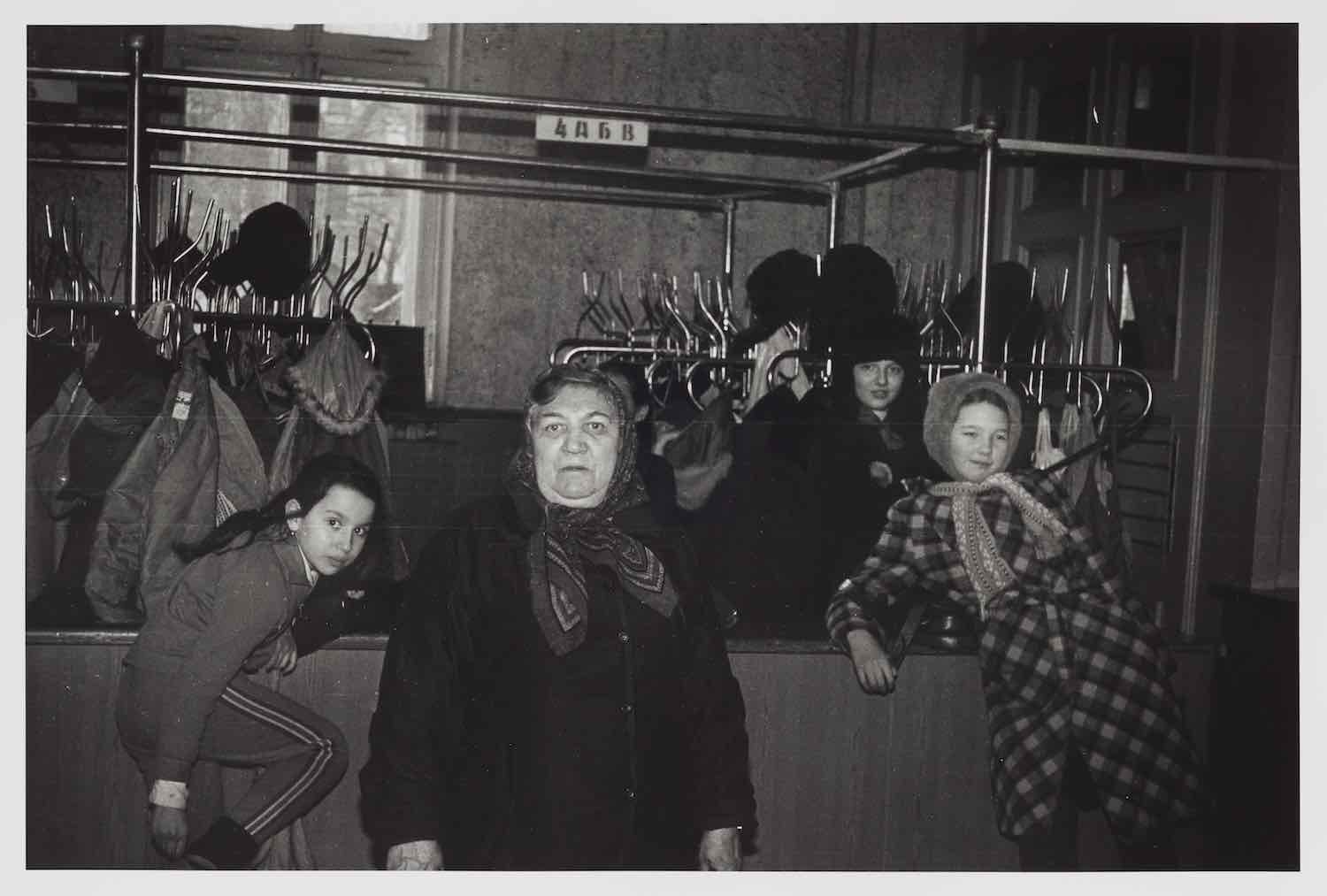

Despite migrating to the US at the age of 10, Kantarovsky still remains well connected to these roots. When he and his partner named their own four-year-old daughter, Vera, he was drawing on several influences. Partly, he says he likes the meaning of the word — belief. But partly it was inspired by his groundbreaking 2014 show at KIM art centre in RIGA with fellow artist Ella Kruglyanskaya, titled Little Vera. Although the name of the show was a reference to a transgressive glasnost blockbuster, the exhibition celebrated 125 years from the birth of the Soviet socialist realist sculptor, Vera Mukhina, the female artist behind The Worker and Kolhoz Woman in central Moscow. Although Kantarovsky declares himself more of a fan of Soviet artist Alexander Deineka, rather than Mukhina herself, Kantarovsky is interested in the ethos of some of the ambitious socialist realist works. “[It’s] to feel like you’re part of something larger, allegories of a collective body, which is very different from the ideology behind abstract expressionism which was a sort of avatar for American individualism.”
The works Kantarovsky made for the show, like most of his paintings, carried his ironic signature style. One Soviet poster-like painting depicting tower blocks and a geometric lamp with a heap of sheets of paper included the Russian address, “Comrade architects, in your hands is the magical Aladdin lamp!” So much for grand ideals. In Kantarovsky’s paintings, everyone is put in their place.
Untitled (You Are Not an Evening IV), 2013, by Sanya Kantarovsky
